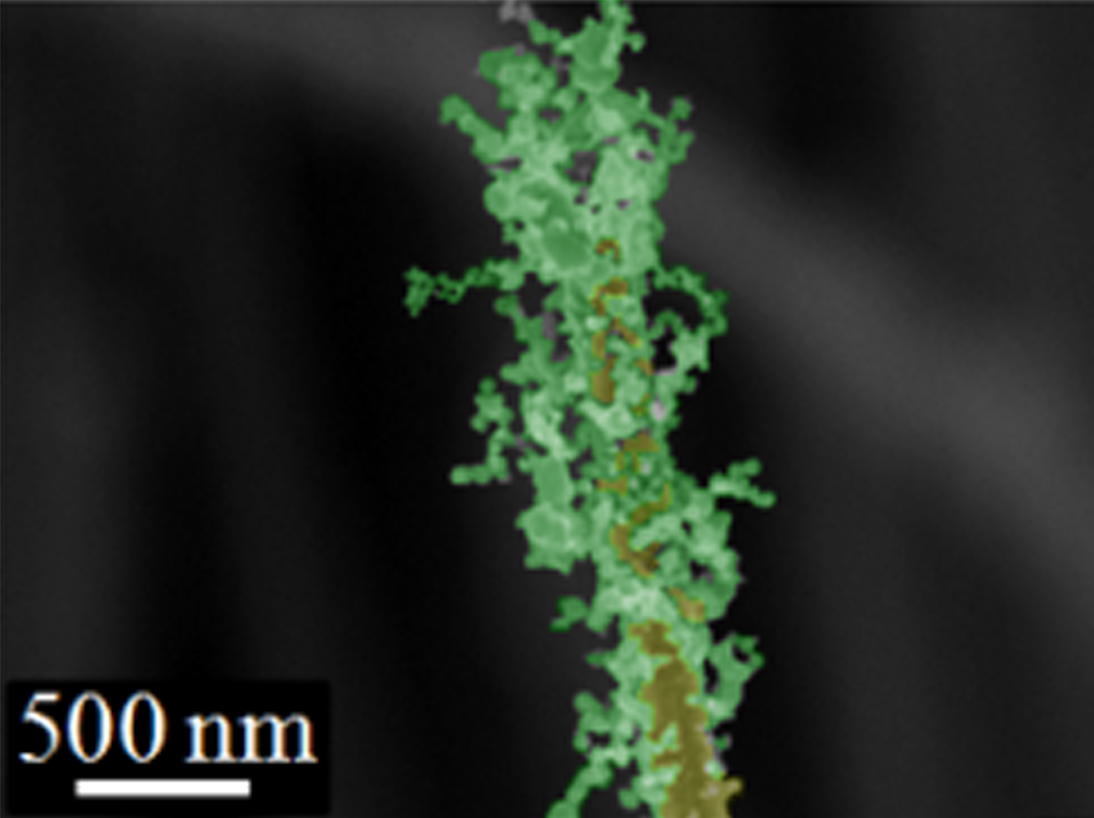Decorations improve nanowire electrical and catalytic performance
May 1, 2012

Decoration with nanoparticles creates intricate surface patterns full of nooks and crannies, twists and turns that greatly improve surface area (credit: Stanford Nanocharacterization Laboratory)
Stanford University engineers have found a novel method for adding chains of nanoparticles to increase the electrical and catalytic performance of nanowires.
The new technique is simpler, faster and provides greater control than earlier methods and could lead to better batteries, solar cells and catalysts.
The development might someday lead to better lithium-ion batteries, more efficient thin-film solar cells and improved catalysts that yield new synthetic fuels, say the researchers.
Tree-like structures
“You can think of it like a tree. The nanowires are the trunk, very good at transporting electrons, like sap, but limited in surface area,” explained Xiaolin Zheng, an assistant professor of mechanical engineering and senior author of the study. “The added nanoparticle decorations, as we call them, are like the branches and leaves, which fan out and greatly increase the surface area.”
At the nanoscale, surface area matters a great deal in engineering applications like solar cells, batteries and, especially catalysts, where the catalytic activity is dependent on the availability of active sites at the surface of the material.
“Greater surface area means greater opportunity for reactions and therefore better catalytic capabilities in, for example, water-splitting systems that produce clean-burning hydrogen fuel from sunlight,” said Yunzhe Feng, a research assistant in Zheng’s lab and first author of the study.
Other applications such as sensing small concentrations of chemicals in the air — of toxins or explosives, for example — might also benefit from the greater likelihood of detection made possible by increased surface area.
Ref.: Yunzhe Feng et al., Sol-Flame Synthesis: A General Strategy To Decorate Nanowires with Metal Oxide/Noble Metal Nanoparticles, Nano Letters, 2012 [DOI: 10.1021/nl300060b]